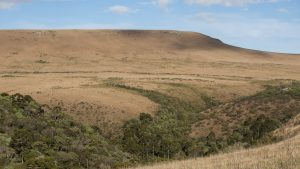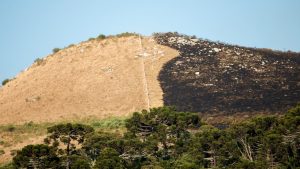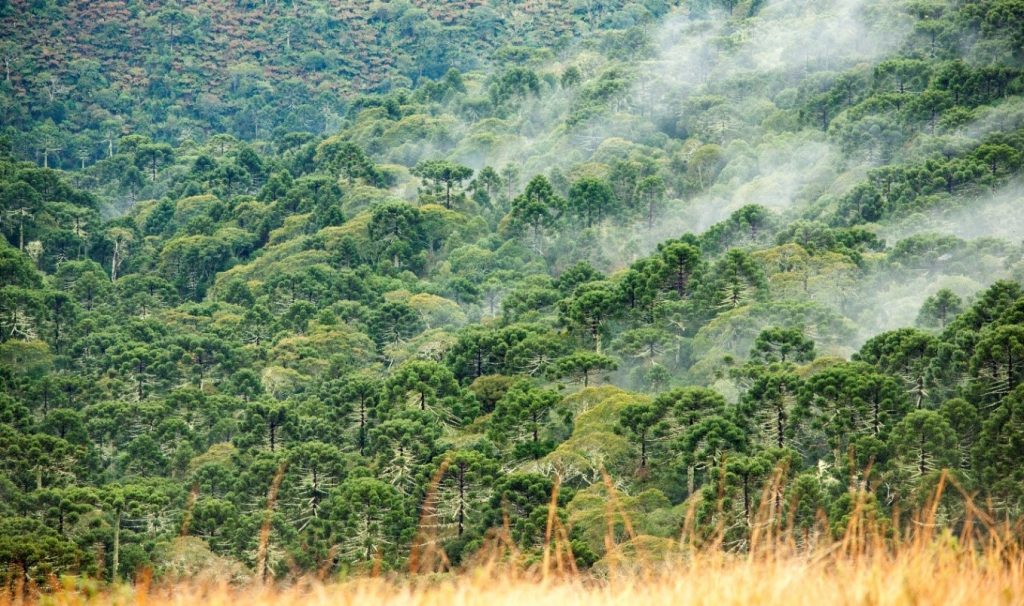São Paulo – For five years researcher Rafael Barbizan Sühs from the Federal University of Santa Catarina (UFSC, acronym in Portuguese) has been developing a specific line of study in the Laboratory of Human Ecology and Ethnobotany of the university. Entitled “Interaction of land management and araucaria trees in the maintenance of landscape diversity in the highlands of southern Brazil,” the research aims to understand the use and domestication of landscapes with the endangered tree species. The project was selected by the Mohamed bin Zayed Species Conservation Fund from the United Arab Emirates to receive a one-year grant.
Written by Sühs, the study will include researcher Nivaldo Peroni and professor Eduardo L.H. Giehl. For them, the support is key for the work. “Considering the difficulties we find here to execute our ideas here in Brazil, we are always looking for foundations and grants. It was worth trying. When it was approved, I was very excited!” said the researcher in an interview to ANBA.
The foundation maintains a platform for those looking for funding to describe their projects. “It is very specific to support projects involving endangered species. When I discovered they had an area specially dedicated to this, and since I work with the endangered Paraná pine, I decided to apply,” said the student of the Doctoring Program in Ecology of UFSC.

Starting in Abril, the work will receive USD 5,000 to be developed. “This project is in my doctorate thesis. We are going to develop it as of March or April,” he explains. The study is part of a broader study developed by the lab.
The idea is to understand the use of landscapes in Southern Brazil as a whole. “Many native peoples lived here and used the forest. They have contributed for the forest’s expansion with the Paraná pine. If now it is present from Paraná to Rio Grande do Sul, we own it to them. This food (pinhão) was essential for them to sustain themselves during the winter without having to migrate. They also planted the Paraná pine,” said Sühs.
Fire
The interaction between human communities and local forests also had fire as an important element. “There are evidence these peoples used fire, showing they increased the presence of fires whey they arrived. And that promotes conservation,” says Sühs. He thinks fire should still be considered beneficial when used orderly and correctly. “There are guidelines defining when it should be made, how big, and so on, that should still be followed,” he said.
Researchers intend to understand the dynamics of these Paraná pines after they’ve lost most of their natural area. “The forest with the Parana pine has been decimated. Only 12% of what was there before the 20th century was left,” the researcher explains about the now endangered species. “It is one step away from extinction in nature. And we have few conservation areas designed to protect the Paraná pine,” he concludes.

The study aims to understand better how the use and management of landscapes impact the current populations of Paraná pines. “Trying do predict how the future scenarios are going to be: with and without management. We have areas managed by societies living in the land whose income source are fire and livestock,” he explains. “Even if the fire is natural, we often see that the conservation areas managers don’t let the fires start. We interviewed them, and they are worried. They fear that, without smaller slash and burns, there will be so much organic material that, when the fire starts, it will burn the whole forest. There must be a balance between these practices,” stressed the researcher. According to him, adult Parana pines helps other tree species to grow, are also traditional practices to manage the fields by containing the forest, and conserves the highland fields.
The value received by the project will cover transportation of the research team from Florianópolis to the mountains, purchasing of a drone, among other costs. “The drone will help us do the mapping, counting how many Paraná pines are in the area. We already have historical images and an idea of how it was before. With the pictures made by the drone of how it is now we will know if the forest has changed,” said Sühs.
In addition to periodic reports sent to the fund, the idea is to publish in an international scientific journal. “And get the information out to the local community around the park. They are also interested in knowing how the practices affect where they live, so we want to publish the research not only in the scientific community but to general society. We consider it is fundamental that people developing those practices remain there in order to conserve the forest and fields,” he stated.
Translated by Guilherme Miranda




